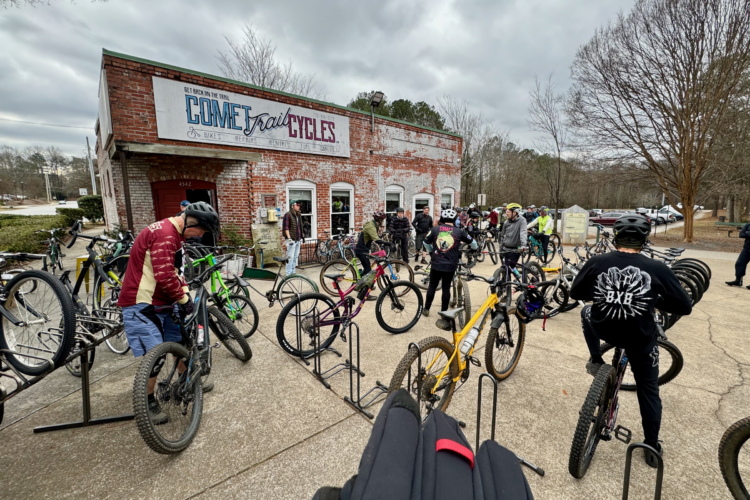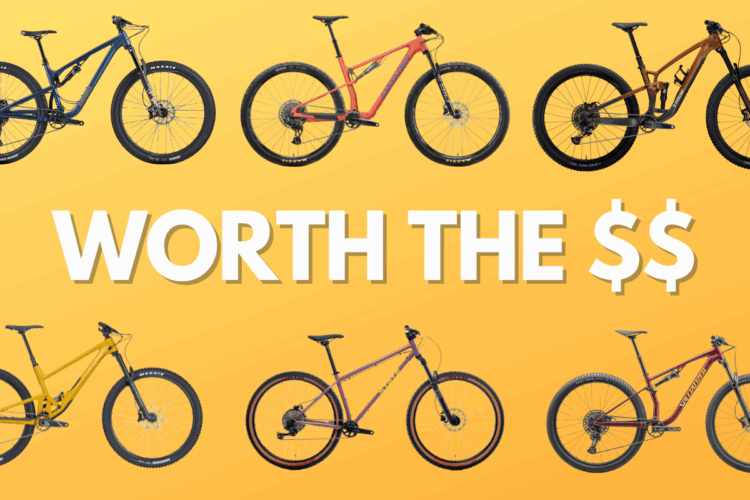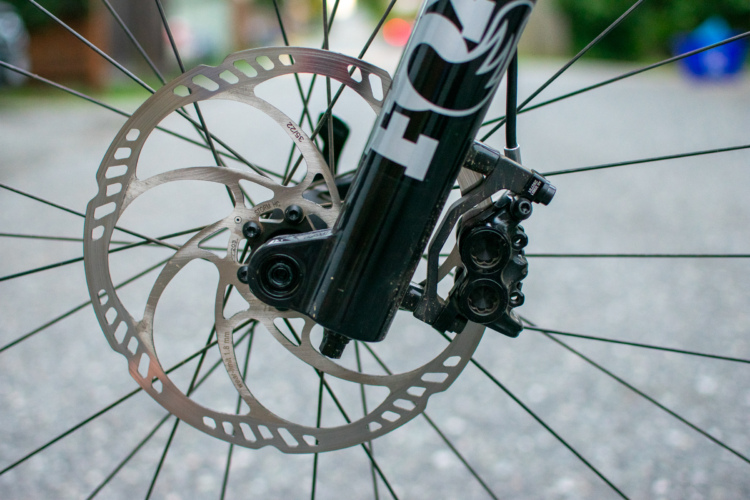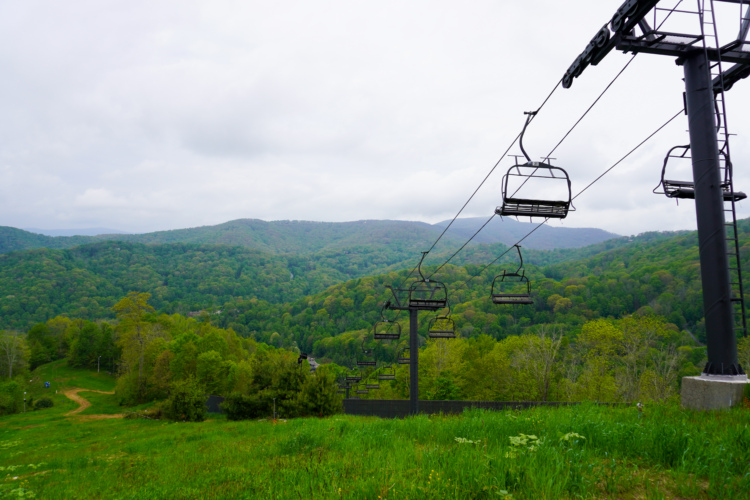
Bikes like the Cannondale Habit remind me of how enjoyable a dead simple trail bike can be. Cannondale released this version in the spring of 2023. It’s got everything that makes it a modern mountain bike: Good geometry and suspension design and SRAM Universal Derailleur Hanger (UDH) compatibility, and nothing to distract it away from what it is: a great all-around trail bike. No flip-chips or storage boxes — nothing like that.
Core and enthusiast mountain bikers know the Cannondale name. It’s in the World Cup XC and enduro sphere, but riders who might only throw their leg over a bike two or three times a year know the name too.
Cannondale is also one of the few bike brands that REI sells, and while I love my local REI, especially for camping goods, it’s not usually where I go for bike support. But it is where a lot of customers with a broader relationship with the outdoors shop, and that’s a great thing for all involved.
While I’ve lengthened the lead into this bike review considerably, I’m trying to make a case for why the Cannondale Habit is an awesome trail bike for people who are buying their first mountain bike or their tenth. Here’s why.
Cannondale Habit key specs
- 140/130mm suspension travel front/rear
- 29er wheels
- Geometry highlights: 65.5° head tube angle, 77.5° seat tube angle, 455mm reach (size medium)
- Price: $5,550 as tested
- Buy from REI


About the Cannondale Habit Carbon 1
I’ve been testing the Cannondale Habit Carbon 1 build. First, the bike has 130mm of frame travel and is equipped with a 140mm fork. Cannondale uses a four-bar Horst layout and calls it Proportional Response, meaning that all of the suspension kinematics and design are size-specific. Size medium riders don’t get the suspension attributes of a large bike and vice versa. The Habit uses 29-inch wheels front and rear.
The frame does have internal cable routing, but keeps things simple with a threaded bottom bracket. Also on the bottom is a rubber frame protector to guard against scuffs. Underneath the top tube, the Habit has another 2-bolt mount to carry a tube and tool kit.
There’s a range of Habit builds, from $2,525 aluminum models to $10,000 carbon builds. There are also a few LT (long travel) specs, with 10mm additional travel front and rear.
The Cannondale Habit Carbon 1 build I’ve been riding has a carbon fiber frame, just like the name implies, and is a very solid, mid-level build priced at $5,550.
This includes a RockShox Pike Select+, and an unassuming Deluxe Select+ shock, a SRAM GX drivetrain, which is all GX (no SX or NX components mixed in), and SRAM G2 R brakes with 180mm rotors.
For wheels, the build comes with Stan’s Arch Mk4 with a 28-spoke layout and Formula/DT Swiss hubs. These are wrapped in Maxxis 2.4” tires.
The cockpit is all OEM Cannondale equipment: a carbon handlebar, 35mm alloy stem, and a DownLow 150mm dropper post. Pretty standard.
So while none of the components have much of a wow or cool factor, none of them really disappoint either.

Geometry
For the medium I’ve been riding, the Habit is designed with a 400mm seat tube, a 65.5° head tube angle and a 77.5° effective seat tube angle. There’s a fairly low 735mm standover height, and an average but appropriate 1200mm wheel base with 435mm chainstays. The reach is 455mm on the size medium.
On the trail
I have had the Cannondale Habit around for some time, but really just started stacking miles on it a few months ago on trails around Colorado. It’s one of those bikes that I can ride on 60-70% of the trails around, but I’ve loved it for the moderately techy to flowy and jumpy trails on the blue to black spectrum, and preferably with some distance because this bike can pedal.
Climbing with the Habit
For being a pretty simple, four-bar suspension layout, the Habit responds better to pedaling input than many other bikes of the same design I’ve ridden. For example, the last bike I reviewed was also a Horst link with only 10mm more travel, and the pedaling feel is drastically different.
The Habit is peppy and energetic under pressure and has no problem with sprinting. Despite feeling like it has a healthy dose of anti-squat, the bike also has impressive traction over tech.
There’s a slight amount of pedal bob, and with the two-mode RockShox shock, I can’t remember if I’ve ever put it in pedal mode. The open mode strikes a great balance between traction and support.
The geometry is easy-going too, which, for a trail bike that sits in the middle range of travel, is just right. It’s a relaxed and comfortable seated position that works well for shorter rides, steep terrain, and long slogs in the saddle too.
Descending
The Habit has a stiff frame, but feels flexible where it needs to be, like around corners. The bike can hold its line plenty well, but also feels forgiving and planted.
Many of the same attributes of the suspension that I praised climbing came into play on the descents. The suspension soaks up small chatter like roots and rocks like a sponge and maintains support for you to push through corners at the end of straightaways.
Most of the time, when I see a bike, especially a trail bike sold at REI with just an inline shock, I’d assume long, chunky descents like those found in Colorado would overwhelm the shock, but this has been such a fun trail bike lately, largely due to its suspension performance and the confidence and fun it inspires on my everyday trails. The bike is as fun and poppy on bump jumps or gaps as it is stable and fast through chunder.
The geometry is on point, and I’m hoping that manufacturers don’t keep pushing the needle on angles. The Habit’s seat and head tube angles and everything else are moderate, and just where a trail bike should be for something that is both stable, and can snap quickly to a different line in a rock garden or dart between a set of trees.



Component check
As I mentioned above, it’s a very demure build kit, but Cannondale product managers put money in the right places here, like the suspension. There’s not a great reason to upgrade either the shock or fork.
A case could be made for the G2 R brakes, but they work fine, and so do the wheels.
The SRAM GX Eagle drivetrain has been predictably good too, though some may want a bigger chainring. The Habit is specced with a 30T.
There’s an easy case to be made for swapping out the DownLow dropper post. The air spring is pre-set and non-adjustable as far as I can tell, and it could easily be re-named the DownSlow. If there was one thing I’d change about the bike, it’d be the dropper post.
The value though, is hard to say. The Habit sits under $6,000 and I wouldn’t say it’s a bad deal, but it’s possible to find bikes with more interesting or exciting build kits than the Habit Carbon 1 for the price.
Who is the Cannondale Habit for?
Here’s the fun part. This bike covers a wide range of people, whether it’s their first bike or the 10th, and they won’t be disappointed.
The Cannondale Habit is familiar and easy enough to get along with for someone who is just buying their first full-suspension bike, and there’s really no learning curve. Plus, the suspension and geometry are so easy and predictable, there aren’t any surprises.
For a more advanced rider, you’ll have a blast pushing this bike through corners, airing out doubles, and whipping it through switchbacks.

Pros and cons of the Cannondale Habit
Pros
- Carbon frame
- Supportive, efficient, grippy suspension
- Fun, playful, and agile trail bike
- Good build kit
Cons
- Good build kit, not amazing value
- Slow dropper post
Bottom line
The Cannondale Habit Carbon 1 is a simple, yet refined do-it-all 130mm travel trail bike that is peppy and capable on the climbs with a playful attitude on the descents.





















1 Comments
Sep 10, 2024